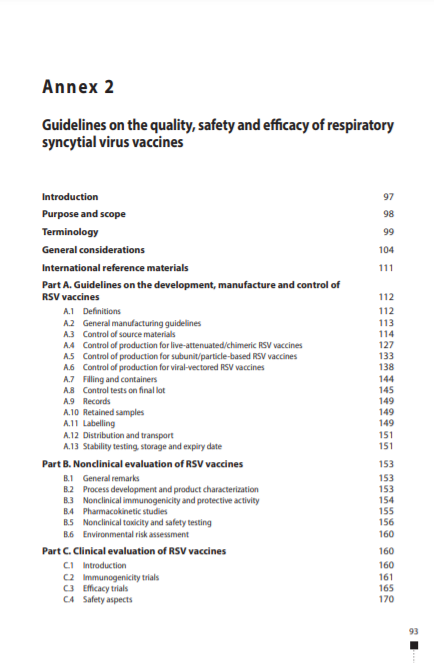Guidelines on the quality, safety and efficacy of respiratory syncytial virus vaccines, Annex 2, TRS No 1024

Overview
Full version of the WHO Technical Report Series N° 1024
Human respiratory syncytial virus (RSV) is a globally prevalent cause of lower respiratory tract infection (LRTI) in all age groups. In infants and young children, the first infection may cause severe bronchiolitis that can sometimes be fatal. In older children and adults without comorbidities or at-risk conditions, repeated upper respiratory tract infections are common and range from subclinical infection to symptomatic upper respiratory tract disease.
In addition to the paediatric burden of disease, RSV is increasingly recognized as an important pathogen in older adults, with infection leading to an increase in hospitalization rates among those aged 65 years and over, and to increased mortality rates among the frail elderly that approach the rates seen with influenza. The risk of severe disease in adults is increased by the presence of underlying chronic pulmonary disease, circulatory conditions and functional disability, and is associated with higher viral loads (1–6). RSV is also a nosocomial threat both to young infants and among immunocompromised and vulnerable individuals (7). High mortality rates have been observed in those infected with RSV following bone marrow or lung transplantation.
